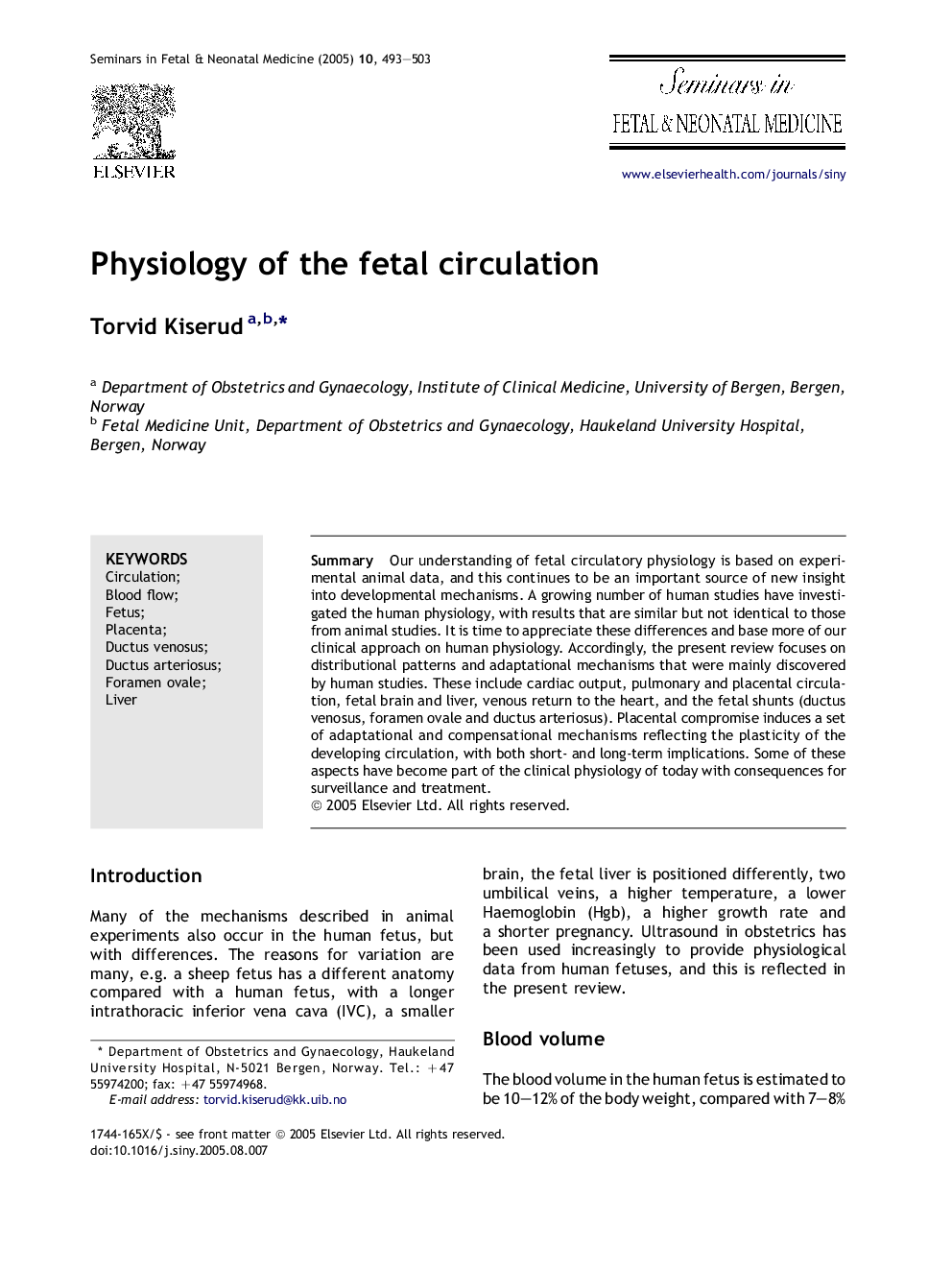| Article ID | Journal | Published Year | Pages | File Type |
|---|---|---|---|---|
| 9335991 | Seminars in Fetal and Neonatal Medicine | 2005 | 11 Pages |
Abstract
Our understanding of fetal circulatory physiology is based on experimental animal data, and this continues to be an important source of new insight into developmental mechanisms. A growing number of human studies have investigated the human physiology, with results that are similar but not identical to those from animal studies. It is time to appreciate these differences and base more of our clinical approach on human physiology. Accordingly, the present review focuses on distributional patterns and adaptational mechanisms that were mainly discovered by human studies. These include cardiac output, pulmonary and placental circulation, fetal brain and liver, venous return to the heart, and the fetal shunts (ductus venosus, foramen ovale and ductus arteriosus). Placental compromise induces a set of adaptational and compensational mechanisms reflecting the plasticity of the developing circulation, with both short- and long-term implications. Some of these aspects have become part of the clinical physiology of today with consequences for surveillance and treatment.
Related Topics
Health Sciences
Medicine and Dentistry
Obstetrics, Gynecology and Women's Health
Authors
Torvid Kiserud,
